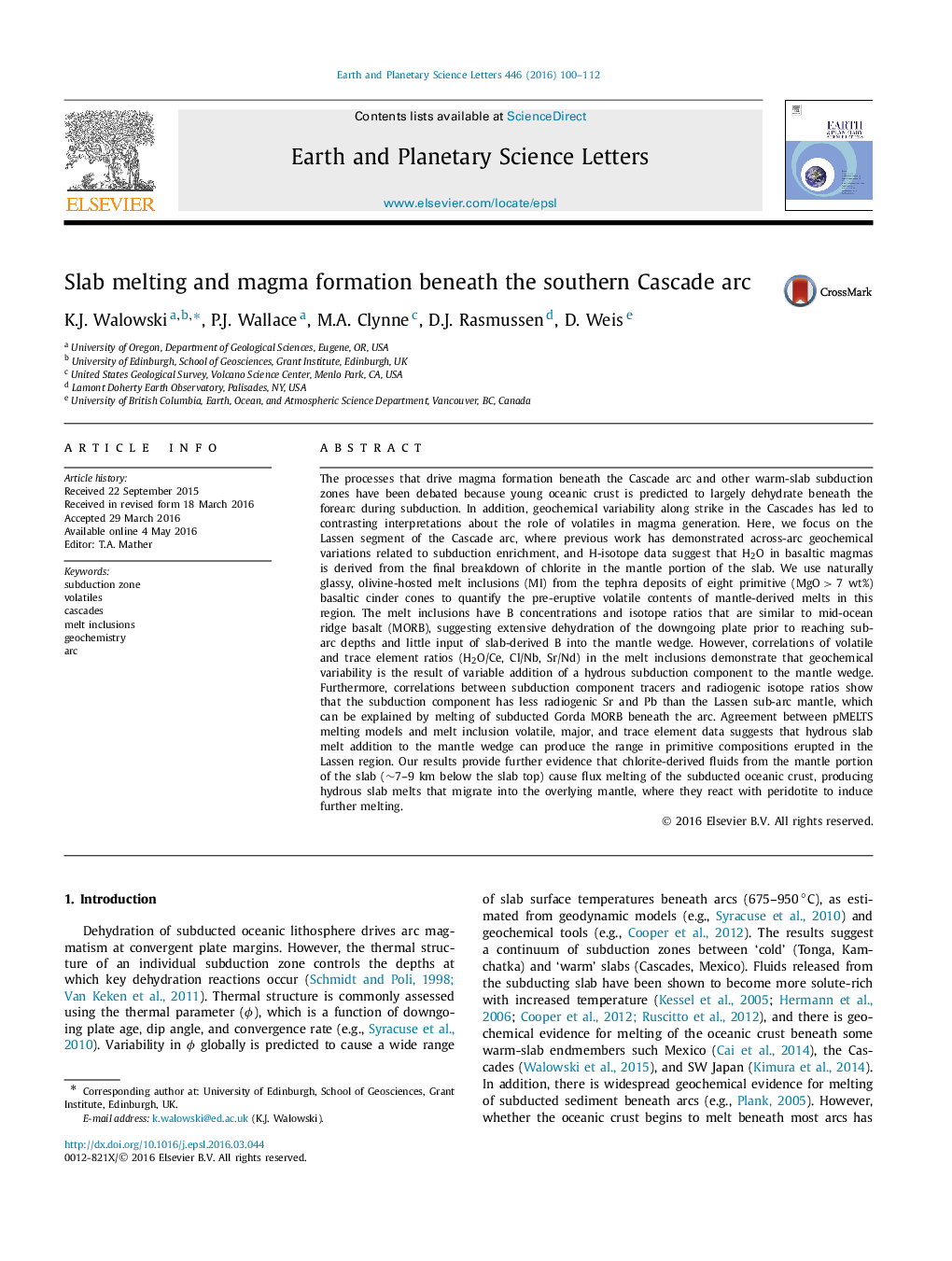| کد مقاله | کد نشریه | سال انتشار | مقاله انگلیسی | نسخه تمام متن |
|---|---|---|---|---|
| 6427350 | 1634710 | 2016 | 13 صفحه PDF | دانلود رایگان |
- δ11B values are consistent with an extensively dehydrated downgoing slab.
- Most samples retain primary H2O and Cl contents derived from a hydrous slab component.
- Fluids from the mantle portion of the slab cause flux melting of slab top.
- Peridotite melting in the sub-arc mantle wedge is driven by hydrous slab melt addition.
The processes that drive magma formation beneath the Cascade arc and other warm-slab subduction zones have been debated because young oceanic crust is predicted to largely dehydrate beneath the forearc during subduction. In addition, geochemical variability along strike in the Cascades has led to contrasting interpretations about the role of volatiles in magma generation. Here, we focus on the Lassen segment of the Cascade arc, where previous work has demonstrated across-arc geochemical variations related to subduction enrichment, and H-isotope data suggest that H2O in basaltic magmas is derived from the final breakdown of chlorite in the mantle portion of the slab. We use naturally glassy, olivine-hosted melt inclusions (MI) from the tephra deposits of eight primitive (MgO>7wt%) basaltic cinder cones to quantify the pre-eruptive volatile contents of mantle-derived melts in this region. The melt inclusions have B concentrations and isotope ratios that are similar to mid-ocean ridge basalt (MORB), suggesting extensive dehydration of the downgoing plate prior to reaching sub-arc depths and little input of slab-derived B into the mantle wedge. However, correlations of volatile and trace element ratios (H2O/Ce, Cl/Nb, Sr/Nd) in the melt inclusions demonstrate that geochemical variability is the result of variable addition of a hydrous subduction component to the mantle wedge. Furthermore, correlations between subduction component tracers and radiogenic isotope ratios show that the subduction component has less radiogenic Sr and Pb than the Lassen sub-arc mantle, which can be explained by melting of subducted Gorda MORB beneath the arc. Agreement between pMELTS melting models and melt inclusion volatile, major, and trace element data suggests that hydrous slab melt addition to the mantle wedge can produce the range in primitive compositions erupted in the Lassen region. Our results provide further evidence that chlorite-derived fluids from the mantle portion of the slab (â¼7-9km below the slab top) cause flux melting of the subducted oceanic crust, producing hydrous slab melts that migrate into the overlying mantle, where they react with peridotite to induce further melting.
Journal: Earth and Planetary Science Letters - Volume 446, 15 July 2016, Pages 100-112
